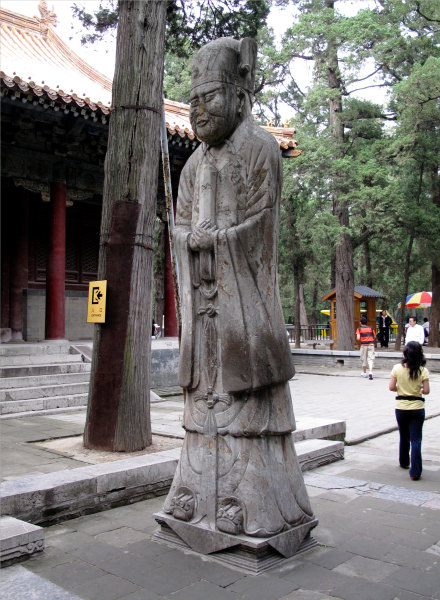Sacred or Spirit Ways
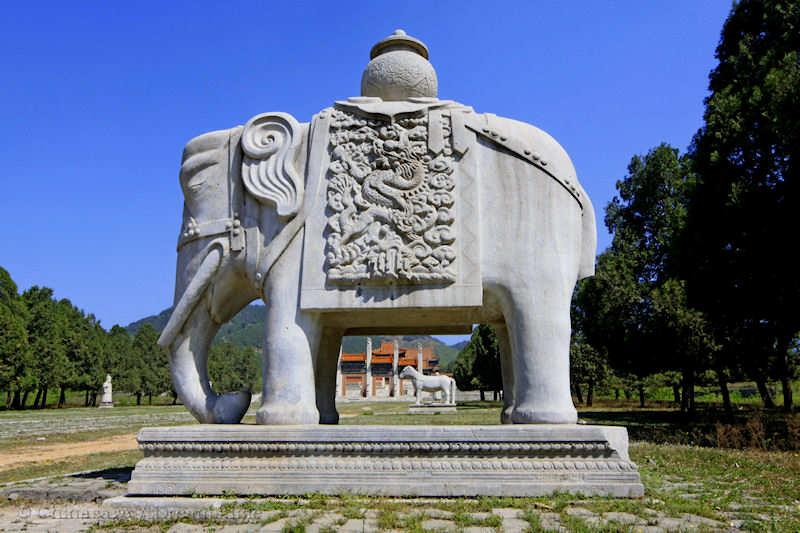
Spirit or sacred ways (神道 Shéndào) have for several thousands of years led to the entrance to tombs of significant figures – mainly Emperors and high officials. The ancient belief is that the dead should be treated just as when they were alive, so the tombs contain the ordinary items of everyday life. The ritual path to the tomb is usually marked by stone statues in pairs facing inwards across the straight path, pointing directly south, to the tomb. They are intended to bring the power of the original subject of the sculpture to life to protect the tomb so there are likely to be tigers, dragons, camels, elephants, lions, qilin and also various state officials. The Sacred Way to Imperial tombs could only be trod by the Emperor and even then only on foot. There was a belief that the departed spirit would start to make its own way to the ancestral burial ground, so it was also a pathway for the deceased. Unlike many other memorials the statues marking Spirit Ways have survived as they are rarely affected by willful destruction, floods or earthquakes. Only the Ming and part of the Qing dynastic burial sites have escaped looting and destruction, but many Sacred Ways have been left intact.
The Sacred Way normally begins with two paired towers called 阙 què . The carvings on the tower give an invaluable insight into the beliefs at the time. According to the rules of Feng Shui a spirit way should run directly from the south towards the tomb complex. The tombs are located on the south face of a mountain, so the way to the cold north is blocked. The 神道 Shén dào may also have a ‘赑屃 bì xì’ at its start which is a stone turtle often bearing a stele (inscribed tablet) on its back. This inscription lists the achievements of the deceased.
Tang spirit way
The Tang mausoleum near Chang'an has a Sacred Way with 68 stone statues along a 1 mile [1 km] route, the statues measure an impressive average 13 feet [4 meters] high. The huge tomb complex was systematically destroyed during the succeeding Song dynasty. Stone sculptures line the way to the joint tomb of Emperor Gaozong and Empress Wu Zetian at Qianling. Two separate groups of stone sculptures totaling 61 figures are of specific people include leaders of neighboring tribes.

Song spirit way
The Northern Song dynasty tombs at巩义 Gǒng yì, Henan near Mount Song include the resting place for seven emperors . It is not far from the then capital of Kaifeng.
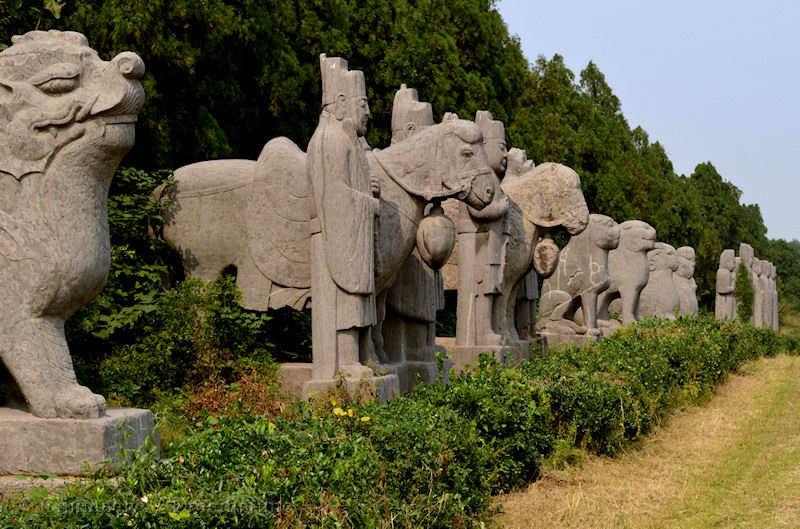
Ming spirit way
The Ming dynasty tomb complex near Beijing (明朝十三陵 Míng zháo shí sān líng) is the best known and most complete tomb complex. It includes an exact replica of the main hall of the Forbidden City. [See a separate extensive section all about the Ming Tombs]. The animals lining the route include camels, horses and elephants. A Sacred Way to the first Ming Emperor Hongwu can be seen at his tomb near Nanjing (明孝陵 Míng xiào líng) it is 1 mile [2 kms] long and lined with lions, xiezhi, camels, elephants, qilin and horses.
When a visiting king from Borneo died during in 1408 a visit a tomb with a sacred way was also built at Nanjing that is still in good condition.
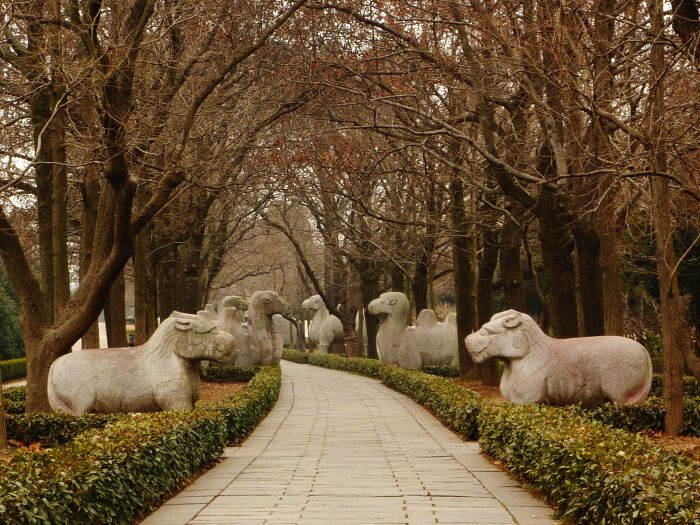
Qing spirit way
The last dynastic tomb complexes of the Qing dynasty were raided and looted in the 1920s. It is divided into Western and Eastern sections, due to differing advice on the best Feng Shui for the site, the eastern part is located 78 miles [125 kms] east of Beijing and is called the 清东陵 Qīng Dōnglíng Qing Eastern Tombs ; here the Spirit Way is an impressive 3 miles [5 kms] long.
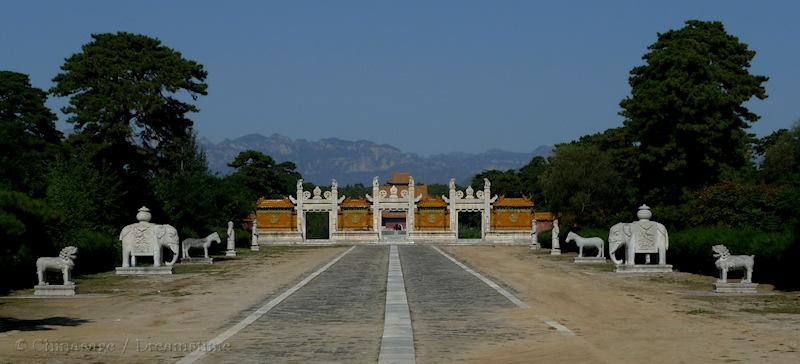
There is also a spirit way at Shenyang that leads to the tomb of Nurhaci (北陵 Běi líng), the ancestral figure of the Manchu (Qing) Chinese Emperors. It is lined with pairs of xiezhi, qilin, horses and camels.
Confucius spirit way
In Shandong at Confucius' temple complex at Qufu there are statues dating back to the Han dynasty. Two pairs of statues have survived including a military general and a civil official.
